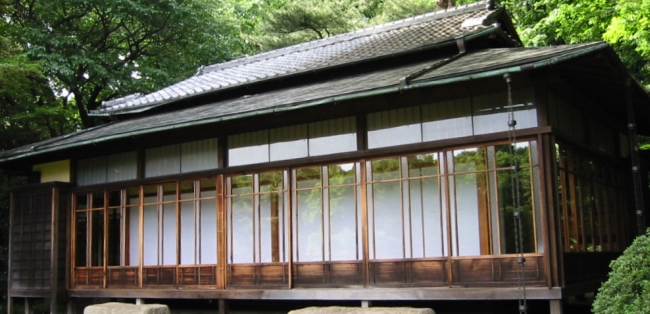A Brief History Of Tea Houses as Meeting Places
- Posted in:
- General

Note: We also did a post about the history of coffeehouses as meeting places here.
Tea: for at least 5,000 years it's been a drink of comfort, warmth and commerce. It goes well with cucumber sandwiches, cream teas, and as a refreshing iced drink in high summer. And in the Far East, it remains not only the drink of choice, but the center of legends, rituals and ceremonies that bring pleasure to many.
So legend has it, the stimulating beverage we now know as tea began when Chinese Emperor and herbalist Shen Nung was boiling some water to drink. Some leaves from a nearby tea bush blew into the pot, and the resulting brew was much to the emperor's liking. In the eighth century, Chinese scholar La Yu wrote the Ch'a Ching, The Classic of Tea, which outlined the best way to grow and pick tea, as well as the best method of preparing the drink. It is thought that a Chinese priest took the ideas with him to Japan, where Buddhist priests were amongst the original few who regularly drank the beverage.
As the practice of drinking tea became more popular, early tea ceremonies in Japan often combined boisterous drinking and gambling, until the advent of the three Tea Masters. Sen No Rikyu, the last of the original three, lived in Kyoto, the old capital of Japan, in the 16th century, and introduced the concept of Zen into the Tea Ceremony, setting the standards for the beautiful ritual we know today.
Tea first made its way to the west in the seventeenth century, during the Chinese Ming Dynasty. The Dutch East India Company first persuaded traders in India and China to part with the precious leaf in around 1605, and fashionable London gradually caught on. The famous diarist Samuel Pepys refers to his first cup of tea in 1660, and it was still being drunk in his household seven years later. It wasn't until the late nineteenth century, however, that tea became widely accessible in the west, when the first tea shop opened in London.
In China, following the publication of the Ch'a Ching, visitors to the region remarked as early as the Song Dynasty, in at least the 13th century, on the long tables set up in market squares where anyone might take a cup of tea. In Japan, tea remained extremely popular with the upper classes, but it was not until 1736 that Buddhist Priest Kouyugai Baisaou opened the first tea shop in Kyoto that was aimed at ordinary people.
Throughout the centuries, tea has been linked with creativity, innovative thinking and intellectual stimulation. It's been popular with social reformers like the British Whig politician Earl Grey, who gave his name to the delicate flavor still widely drunk today. Victorian Prime Minister William Gladstone expressed thanks that he was not born before the invention of tea. Writer Charles Dickens referred to its ability to clear his "muddle of a head" and even fictional characters like Star Trek's Captain Picard are known to be very fond of the drink.
To enjoy a cup of tea in traditional Asian surroundings, head for the nearest Guangdong for Chinese style brews. This Cantonese style tea house usually serves many varieties of dim sum (dumplings) as well as tea. In Japan, tea houses are generally a much more exclusive option, known as ochaya, where typically visitors can observe the tea ceremony and enjoy a drink of the smooth, green, powdery tea known as matcha.
Worldwide, there are now hundreds of different varieties, from the popular black tea brands, to the many different flavors of green tea and herbal varieties. Whether you're a writer, politician, or simply an inspiring intellectual, this versatile drink can get your day off to a great start.
Photo by Melanie M
Comments